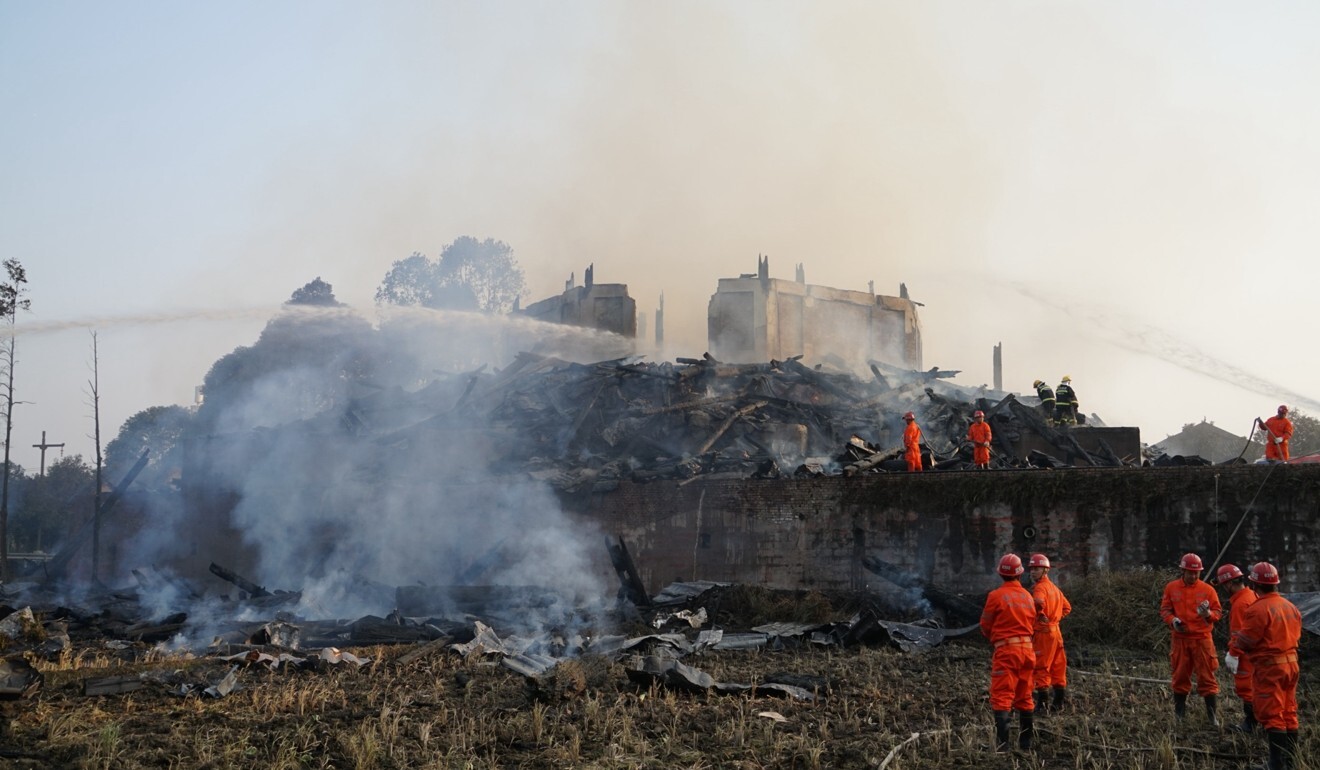
Fire, safety hazards found at Chinese cultural heritage sites, while authorities warn of flood risks
- Officials have found 140 potential fire hazards at 60 cultural heritage sites across the country
- They also warned about flood season, which has hit some areas known for museums and heritage sites
Chinese government officials have found 140 potential fire hazards at 60 cultural heritage sites across the country, including open flames, damaged electrical wires and improper incense burning.

Other examples of potential fire hazards were power points installed directly into the cultural relic, blocked fire hydrants and low water pressure for fire hosepipes.
“It is necessary to lay a solid foundation for safety and effectively improve emergency response capabilities,” said the notice.
Lam Weng Cheong, an assistant professor at the Department of Anthropology of Chinese University Hong Kong, said notices like these are relatively common and act as a nudge for regional and local governments to perform safety checks.
Typically, such notices issued by the central government trigger a bureaucratic process, with provincial governments issuing instructions to county and local administrators to perform checks or make fixes. After the inspections, local officials issue paperwork to prove that they have complied with the notices.
Lam said this may involve checking facilities beyond the museum and archaeological institute. “For instance, if the cultural bureau realised there was a gas station adjacent to a historic building, they might need to give some advice or consider if the risk of fire is too high,” he said.

03:14
Chinese heritage-inspired collections on display at China Fashion Week
In 1982, the government passed the Law of the People’s Republic of China on Protection of Cultural Relics, which sought to protect such artefacts. The law also created a ranking and verification system for buildings, works of art, important documents and archaeological pieces from ancient Chinese culture.
While fires at Chinese cultural heritage sites are not a regular occurrence, they do happen from time to time.
In 2017, the Jiulong Temple, believed to house the largest wooden pagoda in Asia, was destroyed by a massive fire. The temple was in the middle of reconstruction after it was destroyed during the 2008 Sichuan earthquake.
In 2014, a fire ripped through the ancient Tibetan town of Dukezong, which was renamed Shangri-La to attract tourists. The fire destroyed 242 houses.
In 2015, a 600-year-old tower in Yunnan, built during the Ming dynasty, caught on fire. No casualties were reported, but the flames destroyed the building.
The notice from the NCHA also “emphasised that the current flood season has come and the risks of various natural geological disasters have intensified”.

The cities of Zhengzhou and Luoyang, both famous for their museums and cultural heritage sites, were among those that were hit hard by the flooding.
State media reported that museums were flooded, and famous tourist attractions such as the Longmen Grottoes in Luoyang and Shaolin Temple in Zhengzhou saw minor damage in the surrounding areas, but the sites themselves were undamaged.

